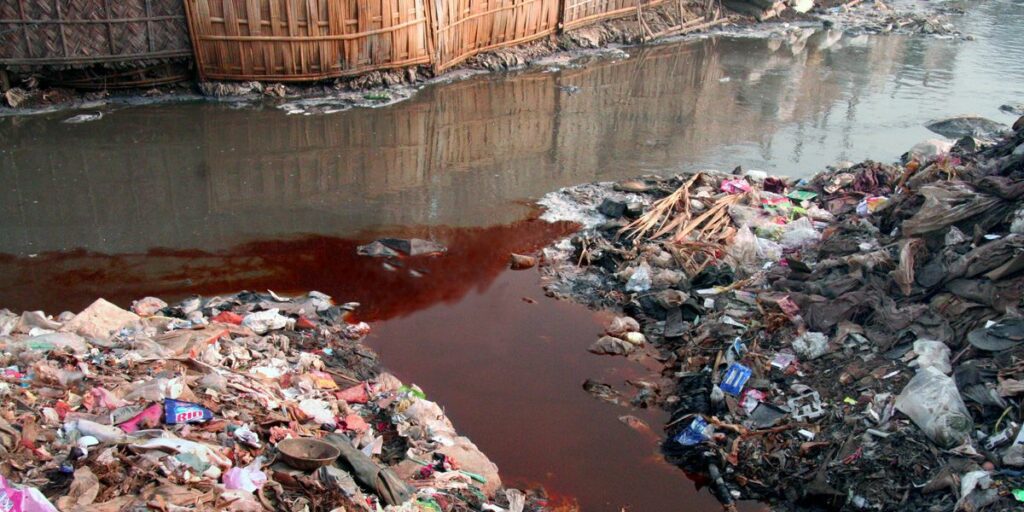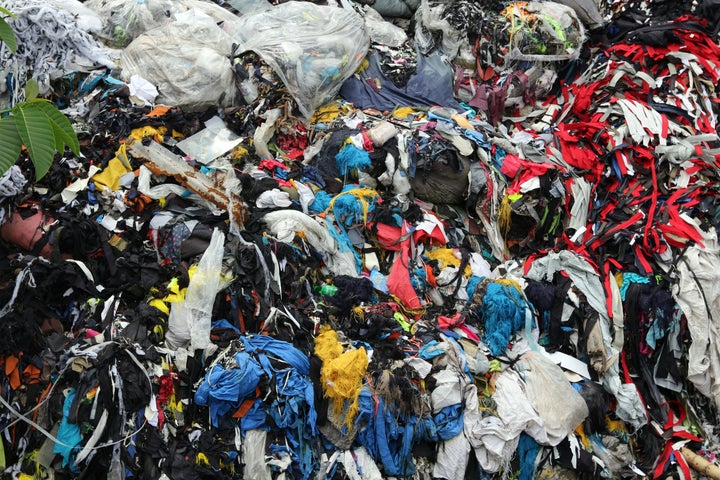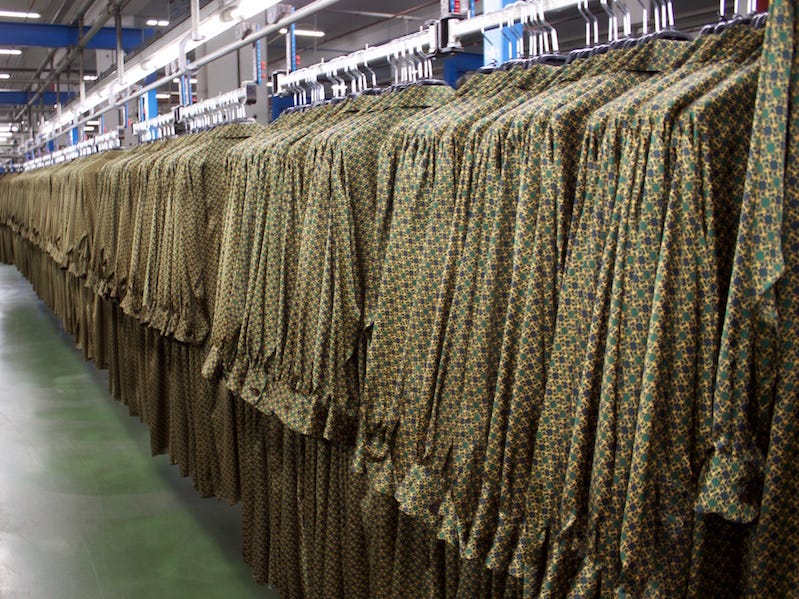What is fast fashion?
Fast fashion is the rapid mass production of trendy (often knockoff) clothing that is both made and sold at a low cost. Fast fashion brands have on average 52 seasons as opposed to the 2 seasons that used to be the norm. Fast fashion feeds the rampant overconsumption that has grown in western culture. The average person buys 64-68 clothing items yearly, half of which are only worn three times. In the 80’s, it was 12 items a year. We are now buying more clothes than ever, and wearing them for less time. Fast fashion products are cheaply and poorly made and often cannot last as long as an investment piece. This further perpetuates a cycle of buying poorly made clothes to replace poorly made clothes that can no longer be worn. Fast fashion thrives on unfair wages, dangerous working conditions and child labour. The environmental impact these brands have is huge; textile production in 2015 created more emissions than planes and commercial boats combined.
Often, the factories that exploit their workers are also responsible for pollution to their workers’ land. The Citarum river in Indonesia is polluted by factories used by Zara and H&M. Known as the world’s most polluted river, 20 000 tons of waste and 340 000 tons of waste water are dumped into the river daily. The waste comes from almost 2000 textile factories. Thousands of people depend on the river for drinking, agriculture and electricity, but it has been found to contain lead levels 1000 times over the recommended amount, along with many other toxins. Many citizens have skin conditions or infections from the water, and respiratory disease and infections due to fumes from the factories. This is just one of the countless natural resources being decimated by fast fashion companies, with direct harm to both the land and the people that depend on it.
Some popular fast fashion brands:
- H&M
- Zara
- Urban Outfitters
- Shein
- Garage
- Forever 21
- Topshop
- Primark
- ASOS
- Boohoo







